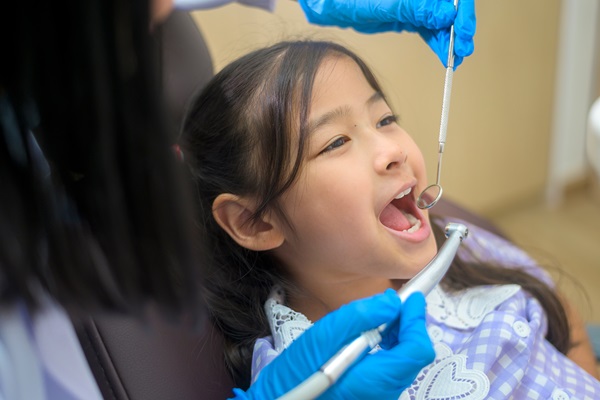 Baby root canals are pediatric dental procedures that involve filling baby teeth that have severe tooth decay and/or oral infection. This review discusses the various steps involved in the baby root canal process, so you and your child know what to expect and any concerns that you may have about treatment can be alleviated.
Baby root canals are pediatric dental procedures that involve filling baby teeth that have severe tooth decay and/or oral infection. This review discusses the various steps involved in the baby root canal process, so you and your child know what to expect and any concerns that you may have about treatment can be alleviated.
What is the process of baby root canals?
The baby root canal process involves the dentist doing an oral examination, taking dental X-rays, preparing the mouth, removing the decayed position of the tooth, and filling and sealing the tooth. A crown is typically placed to help ensure that the tooth remains protected.
Diagnosing the problem (with an oral examination and dental X-rays)
Diagnostics involve an oral examination and a series of dental X-rays. The dentist may also examine the patient’s signs and symptoms and review their dental history during diagnosis. The procedure may be performed on the same day, though a follow-up is often recommended and even necessary.
Preparing the mouth for treatment
The dentist can start the procedure by preparing the mouth. The affected area is made numb with a local anesthetic to help ensure a painless procedure for the child. They may take a mold impression of the tooth in order to form the dental crown.
Removing the tooth decay
The decayed portion of the tooth is removed, which may involve the dentist drilling a tiny hole in the tooth to reach the infected part of the root. All decayed dental pulp is removed with special dental instruments. The tooth is then disinfected and thoroughly cleaned.
Filling the tooth with gutta-percha
The tooth is filled. This process is similar to a dental filling, though the cavity is much larger, and the filling material is different. Specifically, a special dental material known as gutta-percha is used. It is the most optimal material to use for a baby root canal because it effectively fills large cavities.
Sealing the tooth
The tooth is then sealed to protect it from further harm or infection. This usually involves the placement of a temporary crown that the patient wears while they wait for the customization of the permanent crown.
Placing a dental crown (may require a follow-up visit)
Once the pediatric crown arrives from the laboratory, the child’s guardian will bring in the child to have it placed by the dentist. This is a painless process, and the pediatric crown helps protect the tooth until it falls out naturally.
Providing aftercare instructions
The dentist will give the child (and their guardian) aftercare instructions, including oral hygiene tips and recommendations. They will also schedule a follow-up visit for a routine cleaning and check-up, usually four to six months after the crown is placed.
Our dental practice offers baby root canals
Is your child experiencing signs or symptoms of deep tooth decay or tooth infection? If so, contact our dental practice today to schedule a time for a convenient visit. We can diagnose the tooth's condition and recommend a treatment process, which may involve a baby root canal, depending on the severity of the issue.
Request an appointment or call Grand Parkway Pediatric Dental at 832-579-0960 for an appointment in our Richmond office.
Recent Posts
Kids dentist practices are key to establishing a positive outlook on dental care, especially when guiding children through the early stages of oral health. Finding the right provider can transform what might otherwise feel like a stressful appointment into a comfortable, beneficial experience. Pediatric dentistry involves more than fixing cavities; it focuses on teaching proper…
Finding a kid-friendly dentist is essential for establishing healthy oral care habits in children early on. Regular dental cleanings significantly help prevent cavities, promote good dental hygiene, and ensure proper development as children grow. The dentist provides the necessary cleanings and exams in a welcoming and positive environment that makes children feel comfortable and engaged…
A kid-friendly dentist educates children on how to improve their oral hygiene at home. These lessons can help as children grow older and become more independent. A kid-friendly dentist focuses on tailoring their office atmosphere and services to make it most comfortable for younger children.Every dentist has a unique way of educating their patients. These…


